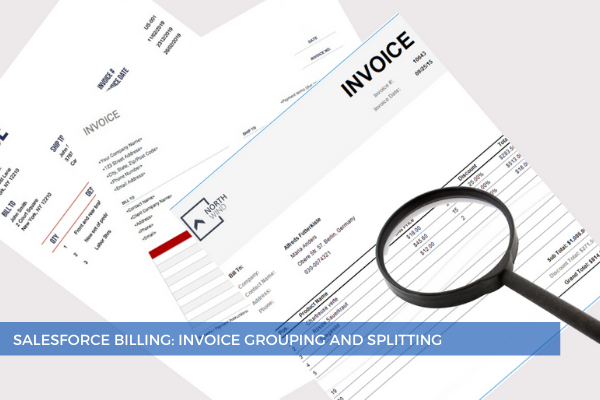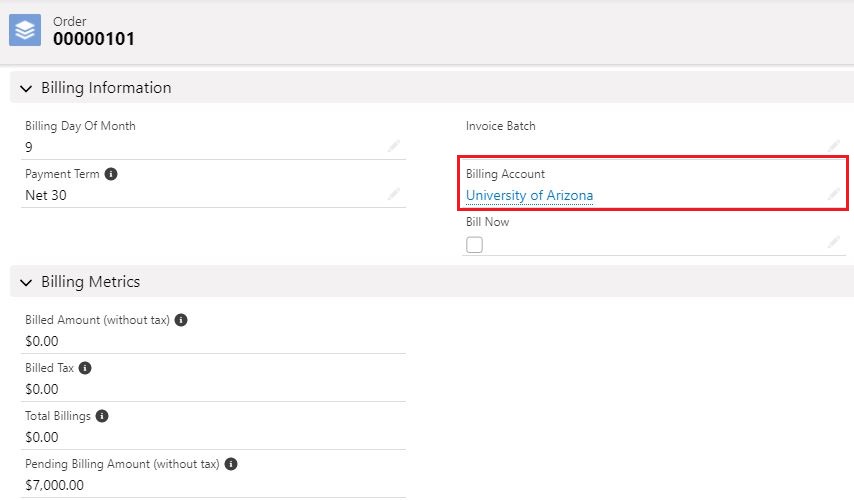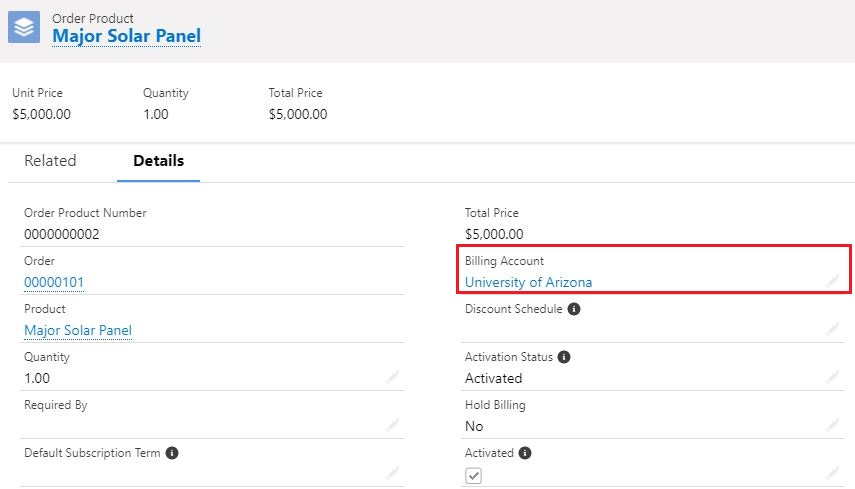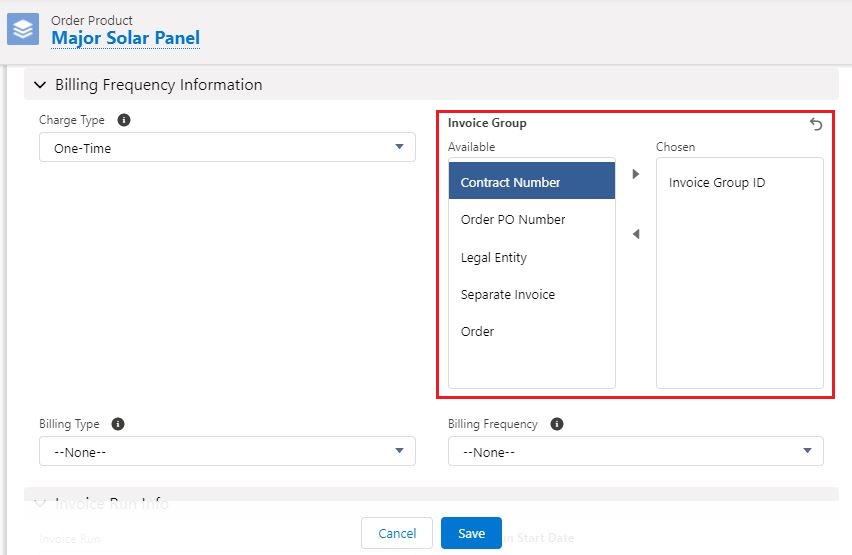
16
JunSalesforce Billing allows you to generate multiple invoices per order or consolidate invoices across multiple orders to ensure that customers are efficiently billed. There are two default ways for the system to split invoices which are always applied, no matter what, and we cannot influence this behavior.
First of all, order products with different Payment Terms will be automatically split into separate invoices. That’s because we have only one Due Date on a given invoice, and it is calculated based on a given Payment Term. Thus, only order products that share the same Payment Term can be consolidated into a single invoice.
Another way the system splits invoices is by Account or by Billing Account (if it’s defined) because invoices may only relate to a single Account. The Billing Account field is a lookup field on the Order and Order Product that looks up to the Account object and overrides the inherited Account. It identifies the account associated with billing activities because the general account is not always involved with the billing operations. This way, we can define an account to send invoices to instead of the account the order lives on.
 If the Billing account is defined on the Order Product, then a separate invoice will be generated for the Order Products that share the same Billing Account. The Order Product Billing Account overrides the Billing Account on the order header. Consequently, if the Billing Account is specified on the Order, then all order products, unless they have a different Billing Account, will be included in a single invoice.
If the Billing account is defined on the Order Product, then a separate invoice will be generated for the Order Products that share the same Billing Account. The Order Product Billing Account overrides the Billing Account on the order header. Consequently, if the Billing Account is specified on the Order, then all order products, unless they have a different Billing Account, will be included in a single invoice.
 We can also define our own criteria for invoice splitting within a single account by using the Invoice Group field on the Order Product. This is a multi-select picklist used to group invoice lines based on different criteria into separate invoices. If this field is left undefined, all order products will be consolidated into a single invoice, provided they have the same Invoice Batch, Payment Term and Billing Account. Keep in mind that although Invoice Batches can be used to split invoices, their primary purpose is to distribute the load of invoice runs evenly and help their performance.
We can also define our own criteria for invoice splitting within a single account by using the Invoice Group field on the Order Product. This is a multi-select picklist used to group invoice lines based on different criteria into separate invoices. If this field is left undefined, all order products will be consolidated into a single invoice, provided they have the same Invoice Batch, Payment Term and Billing Account. Keep in mind that although Invoice Batches can be used to split invoices, their primary purpose is to distribute the load of invoice runs evenly and help their performance.
 Thus, the values that are available on this picklist are:
Thus, the values that are available on this picklist are:
Contract Number – it will correspond to the Contract Number lookup on the order.
Order PO Number – the PO Number is specified in a text field on the order.
Legal Entity – a lookup field on the order product.
Invoice Group ID – this is an open text field on the order product. If you need to custom split or group any order products into separate invoices, the Invoice Group ID should be further populated. Usually, an automation injects a value into the Invoice Group ID field on the Order Product upon Order Product Creation.
 Separate Invoice – this option will force the creation of a new invoice with a single invoice line for the order product.
Separate Invoice – this option will force the creation of a new invoice with a single invoice line for the order product.
Given that the Invoice Group field is a multi-select picklist, it allows for multiple values to be selected, which would result in the creation of separate invoices for each unique combination of the Invoice Group values on top of the default ways of invoice splitting.
Comments (0)